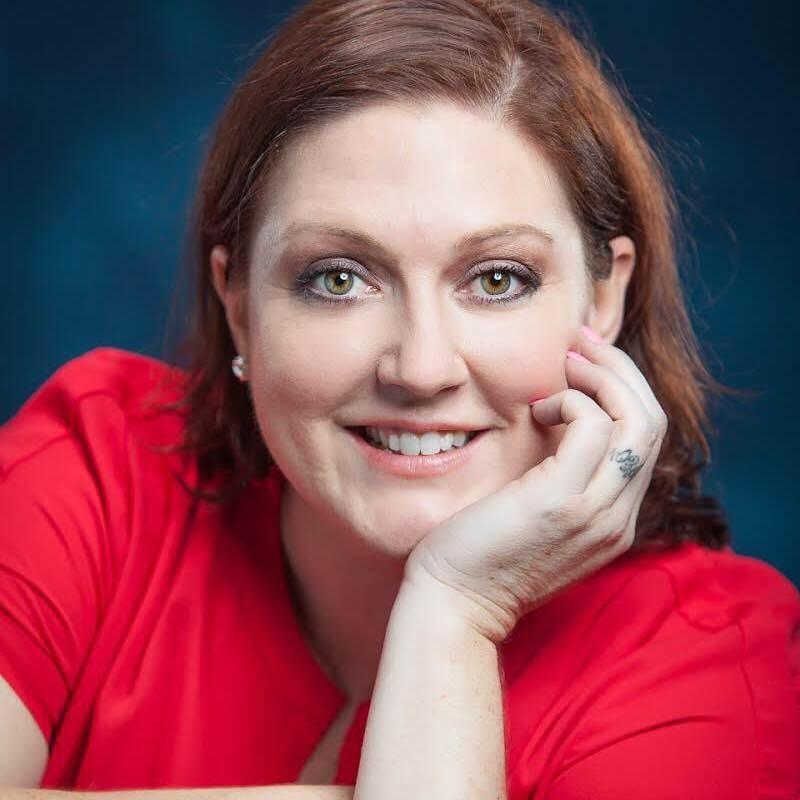- Calls to this hotline are currently being directed to Within Health, Fay or Eating Disorder Solutions
- Representatives are standing by 24/7 to help answer your questions
- All calls are confidential and HIPAA compliant
- There is no obligation or cost to call
- Eating Disorder Hope does not receive any commissions or fees dependent upon which provider you select
- Additional treatment providers are located on our directory or samhsa.gov
Amy Waddle’s Recovery Story

 My name is Amy Waddle. I am an eating disorder, sexual abuse, suicide survivor who lives with Bipolar II disorder, and I’ve lived with bipolar since adolescence.
My name is Amy Waddle. I am an eating disorder, sexual abuse, suicide survivor who lives with Bipolar II disorder, and I’ve lived with bipolar since adolescence.
I adopted the ups and downs and emotional darkness as “it’s just me” for almost ten years before being diagnosed at age 24. My eating disorder recovery process began in 2001 and lasted 18 years. I am currently healing from the sexual abuse I suffered as a child.
Most would say my childhood was fairly ‘normal’ from the outside. I had Christian parents and two older brothers. My Dad was a successful businessman (gone most of my childhood.) On the surface, we were a well-to-do upper, middle-class family who believed in God.
Pictures show I smiled and laughed, roamed the fields, rode bikes around the neighborhood, and chased lightning bugs at dusk. But, there was a world underneath, a life no one would suspect – not even me – because I separated myself from my body, all feelings, and sensations. I found safety in not being present. All that was left were lost memories.
If asked to describe how I felt about myself, it would’ve been invisible, not good enough, different, worthless, and unsafe. My body wasn’t safe; it felt scared, confused, and trapped. At the time, I didn’t have words to describe what was happening, so I never told anyone.
I found ballet when I was 11 years old. From the moment I stepped up to the ballet barre, I felt at home. I was told I was a natural; I had the ‘perfect’ ballet body. I auditioned for pre-professional classical ballet schools at the age of 13, and by the age of 14, I was accepted into Petrus Bosman’s Virginia School of the Performing Arts in Lynchburg, Va.
Moving away from home forced me to grow up quickly. It also had its perks. I didn’t have to live with my family. I had my own checkbook, dorm room, friends, the rest of my life figured out. I no longer felt different. My body felt safe. I was no longer invisible to my Dad. He left work and came to every show. He was so proud of me and my dream of becoming a professional ballet dancer.
Unfortunately, some dreams are not meant to be. Only two years into my training, I received the diagnosis that would change the trajectory of my life.
One morning, I woke up and couldn’t move. The best orthopedic doctor in Washington D.C. diagnosed me with degenerative disc disease, arthritis, and three herniated discs. He said I had the spine of a 40-year-old when I was only 17.
None of that bothered me at first. Injuries came with the territory. However, the jagged edges of reality and the words “You will never dance again” tore my heart, creating an emotional injury that haunted me for two decades. I refused to believe it and kept training for another six months until I couldn’t hold my leg in the air.
Only then did I walk away. I moved back home, my dad went back to work, and I felt invisible. I felt as if I was not good enough, different, worthless, and like my body wasn’t safe.
I was right back where I started until I heard, “But if you could just stay thin, keep your dancer body, you’ll be happy, safe, and have all the things you had as a dancer.”
Without hesitation, those words – whispered from deep inside me – became my truth, and I spent the next 18 years worshipping the god of my pain that lived in my bathroom scale. Nothing had value outside numbers, food rituals, and excessive exercise.
There was no relationship as important as the one I had with my eating disorder, and no one could take that from me. When my eating disorder wasn’t raging war inside my head, I battled suicidal thoughts, hopelessness, and depression. Darkness surrounded everything.
The last grain of sand slipped through the hourglass in December 2001 when I collapsed at work. My boss drove me to the emergency room.
Here was another doctor, another stab of reality, “You almost had a heart attack.” With those words echoing in my mind, I made the most crucial decision of my life. I chose to live.
I didn’t know how I was going to face the monster that lived inside my brain or how it got there in the first place, but I knew I had to try because buried under years of pain and self-loathing, was hope. Hope for the broken dancer and young girl who didn’t feel safe.
Hope was the only thing strong enough to break me out of my prison. I did three months of inpatient treatment at Remuda Ranch in Wickenburg, Az. and stayed in four years of outpatient therapy. The active recovery process lasted ten years.
Through it all, I fought every battle clinging to the hope that started my healing process. I didn’t arrive at “Recovered.” It evolved, and so did my life and identity. It was a process full of pain and insurmountable joy.
I began writing my memoirs a few years ago, and through the research process discovered the sexual abuse of my childhood. Just last summer, in EMDR therapy, I connected with a memory from 30 years ago that had been floating just outside my awareness.
I share my story at every opportunity in hopes my life may be a mirror for people to see inside their own journeys, and ultimately, find the healing for which they are looking.
I believe God gave me my story for a reason, but it is not who I am. I am more than what’s happened to me, my illness, and my recovery. I am me; I am safe; I am enough.
The opinions and views of our guest contributors are shared to provide a broad perspective of eating disorders. These are not necessarily the views of Eating Disorder Hope, but an effort to offer a discussion of various issues by different concerned individuals.
We at Eating Disorder Hope understand that eating disorders result from a combination of environmental and genetic factors. If you or a loved one are suffering from an eating disorder, please know that there is hope for you, and seek immediate professional help.
Published on February 4, 2019.
Reviewed & Approved on February 4, 2019, by Jacquelyn Ekern MS, LPC
Published on EatingDisorderHope.com

The EatingDisorderHope.com editorial team comprises experienced writers, editors, and medical reviewers specializing in eating disorders, treatment, and mental and behavioral health.

